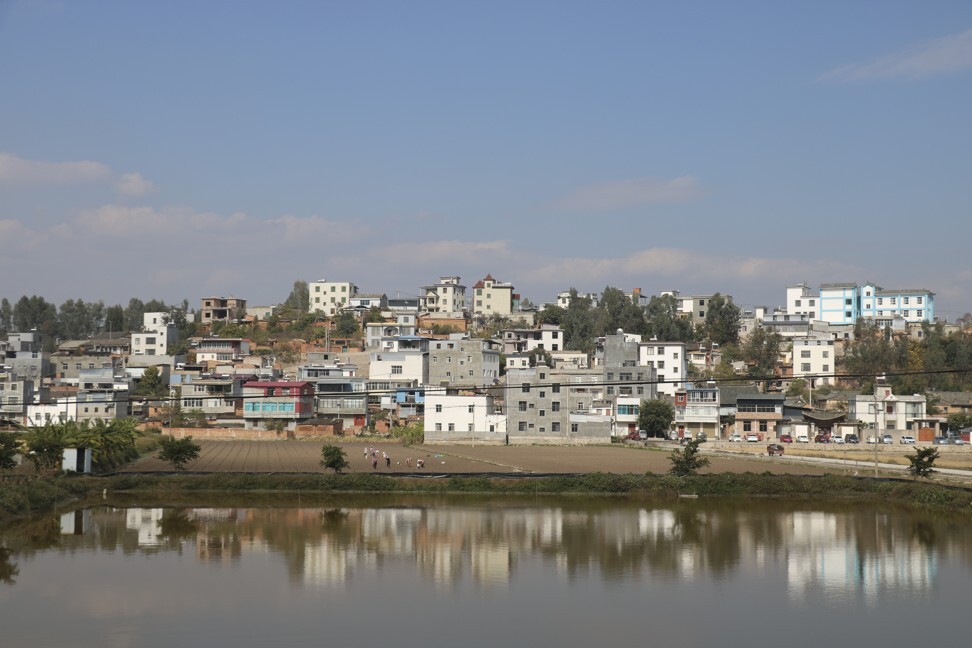
Making tracks through China: from the heart of Yunnan on the trail of an old French railway
- From Kunming to the steel Renzi Bridge, a wonder of the industrial age on the Kunming-Haiphong Railway
- Part of the old Gebishi branch line and a few stations have been restored for a twice-daily narrow-gauge ‘small train’

The mustard-coloured Kunming North railway station, in the capital of Yunnan province, integrates with the surrounding high-rises like foie gras at a vegetarian dinner party. Although its wooden window shutters and clock tower hint of French inception, this incarnation dates back only to 2015.
Explaining the French facade, the station houses the Yunnan Railway Museum, which commemorates the French-engineered, 855km-long (530-mile-long) Kunming-Haiphong Railway.
Les Chemins de Fer de L’Indo-Chine et du Yunnan was controversial from the start, as placards in the museum document with textbook Marxist aggrievement. The French “war of aggression against China in 1883” provoked the “stupid Qing government” to sign an “unequal treaty” and give up Chinese suzerainty of Vietnam. After the first Sino-Japanese war ended, in 1895, the French “blackmailed” the “weak and incompetent” Manchu rulers into consenting to the construction of a railway from Vietnam into China “under threat of war”. Ouch!
Adding to this “national humiliation”, the railway claimed the lives of thousands of Chinese and Vietnamese coolies, tasked with working in three climate zones and mountainous terrain.

China’s historical lens blends admiration with the anger, though, the former reserved for engineer Paul Bodin’s Viaduc de Faux-Namti, a “crossbow” steel bridge lavished with attention on the gallery walls for its aesthetic beauty and smart design. Appearing to resemble the character 人, ren (person) – hence the local name, Renzi Bridge – it still stands but is no longer crossed by passenger trains.
“It’s very difficult to get to the Renzi Bridge via public transport,” tour guide Cui Xiongtao explains over supper in a Dai ethnic restaurant in downtown Kunming.
“It could take you days,” agrees Old Fu, a retired train driver who is spending his twilight years documenting the Kunming-Haiphong Railway.
Instead, both men encourage me to visit more easily reached railway heritage sites along the Red River valley. The French railway ran south from Kunming until it hit the Red River fault, then followed the river to Haiphong and the South China Sea.
Although the narrow-gauge railway ceased passenger services in 2005, I ride the iron cockerel in spirit, as trains heading south to Vietnam follow parts of the original route. Not far beyond Kunming, the French track heaves into view beyond the carriage windows, edged into the red earth.
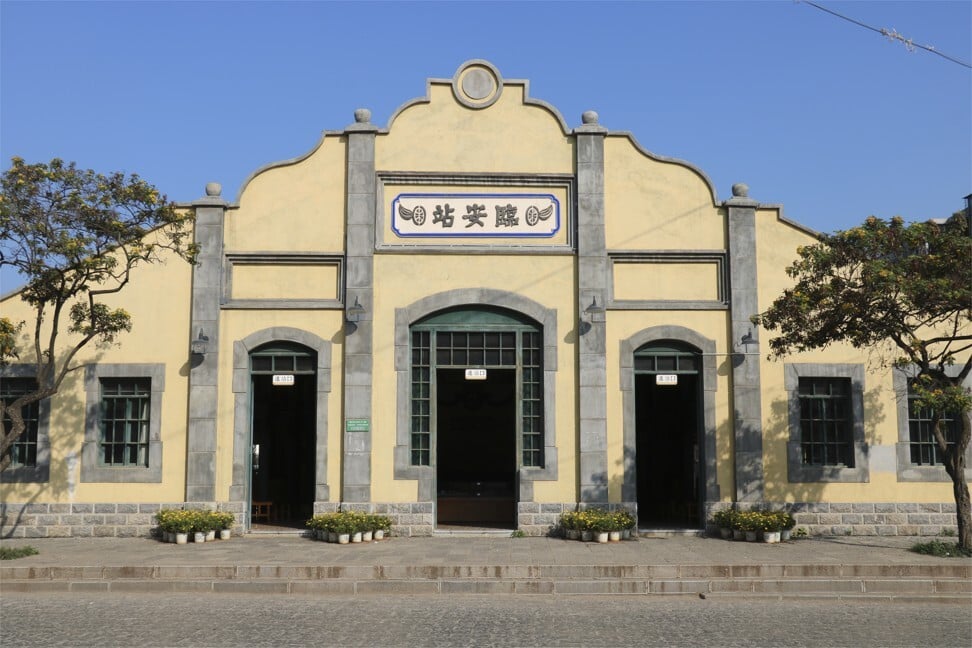
The new track veers away from the trunk line outside Jianshui, an old frontier settlement where I alight and take a taxi from the station, situated a little way out of town, to the towering crimson Chaoyang Lou (East Gate), which, my driver proudly notes, “is 31 years older than Tiananmen”.
A short walk from these imposing Ming ramparts, Linan station was a stop on the Gebishi branch line and long derelict before being repurposed as a tourist station in 2015. Now, Jianshui’s “small train” departs from Linan twice daily for Tuanshan, 13km away.
Construction of the Gebishi branch began three years after the Kunming-Haiphong line was completed. French machinery was used and, when the line was operational, American Baldwin steam engines hauled tin from the mines, now disused, that pepper the area.
The retrofitted station conjures up a romantic vision of Sino-French amity, with statues of happy 1920s and 30s commuters attracting the attention of passengers brandishing selfie sticks high on nostalgia for Republican-era cosmopolitanism. After a conductor hands out water and snacks, and checks we’re in our allotted seats in the wooden carriage, the mustard-yellow train, its engine embossed with the characters “Jianshui Gucheng – Jianshui Ancient Town”, chugs gently into a rustic realm of rice paddies, duck ponds and fields striped with every shade of edible green.
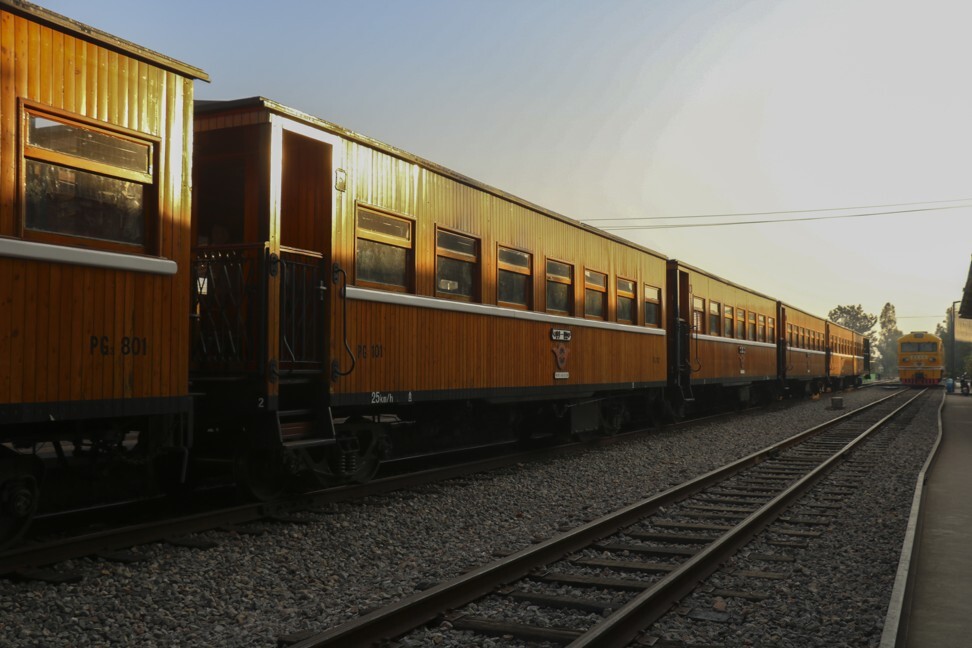
Shuanglongqiao station is named after an adjacent 17-arched bridge crested with three pavilions. Shuanglong means “double dragon”, and the bridge is at the confluence of the Lu and Tachong rivers, waterways the Chinese considered to be dragons. I hurry past knick-knack vendors to beat the crowd to this Qing masterpiece. It’s a blend of functionality and artistry that is all the more exquisite when viewed from the parapets, the arches reflecting a haunting symmetry in the deep jade waters.
Having waited 30 minutes for its passengers, the train rolls on to the next stop, which is named after another ancient bridge. Xianghuiqiao is a three-arched stone-and-wood beauty built in 1814, well over a century before the railway arrived and testament to the regional prosperity that predated the colonial adventure. The restored station house dates to 1936; its grey, Soviet-style replacement still stands alongside, suggesting that if architectural aesthetics are a measure of progress, humankind is in decline.
A majestic Asian openbill stork swoops down past the train as if to welcome us to Tuanshan, the small train’s terminus, where the passengers have a couple of hours for lunch before their return journey.
Founded by the Zhang clan in the early Ming dynasty, the hillside settlement prospered from Qing dynasty tin mining. The Zhangs splashed their cash on classical villas, ornate gardens and Zen temples, the crumbling remains of which can be visited for a fee of 30 yuan (HK$33), tourist dollars supplanting mining revenue – yet still reliant on rail.

The restored part of the Gebishi line goes no further so I take a bus to Mengzi by way of two old railway sites mentioned by my friends in Kunming. The first is in the former county capital, Gejiu,for centuries the centre of the regional mining industry and the first station on the Gebishi branch line to be connected to the trunk, in 1918. Fading yellow Gejiu station is a shadow of its former self, however, lost in a labyrinthine market and now home to a clinic specialising in ailments of the bones.
Nearby Jijie is a predominantly Hui Muslim enclave defined by the Grand Mosque of Shadian, one of the largest and oldest in the region. Beyond this towering religious site the old railway snakes through a tumbledown, impoverished township, the tracks neglected and flecked with litter. Dodging thorny weeds and plastic cartons, I eventually find the boarded-up Jijie station, its remaining entrance gate now a ramshackle shop selling caged birds and potted plants.
Mengzi is the neon-lit county capital of multi-ethnic Honghe prefecture, a lively place dominated by karaoke houses and restaurants serving the city’s signature dish, “crossing-the-bridge rice noodles”.
I find lodgings in a railway-themed hotel called Dianyue Station (“Dianyue” being the Chinese name for the Kunming-Haiphong Railway). The interior is festooned with railway photography, including several pictures of the Renzi Bridge, and enough paraphernalia to comfortably fill a wing of the national museum in Beijing. I’m directed down a green corridor designed to resemble a passenger carriage to my room, which is named “Nanxi”, after one of the original French stations.
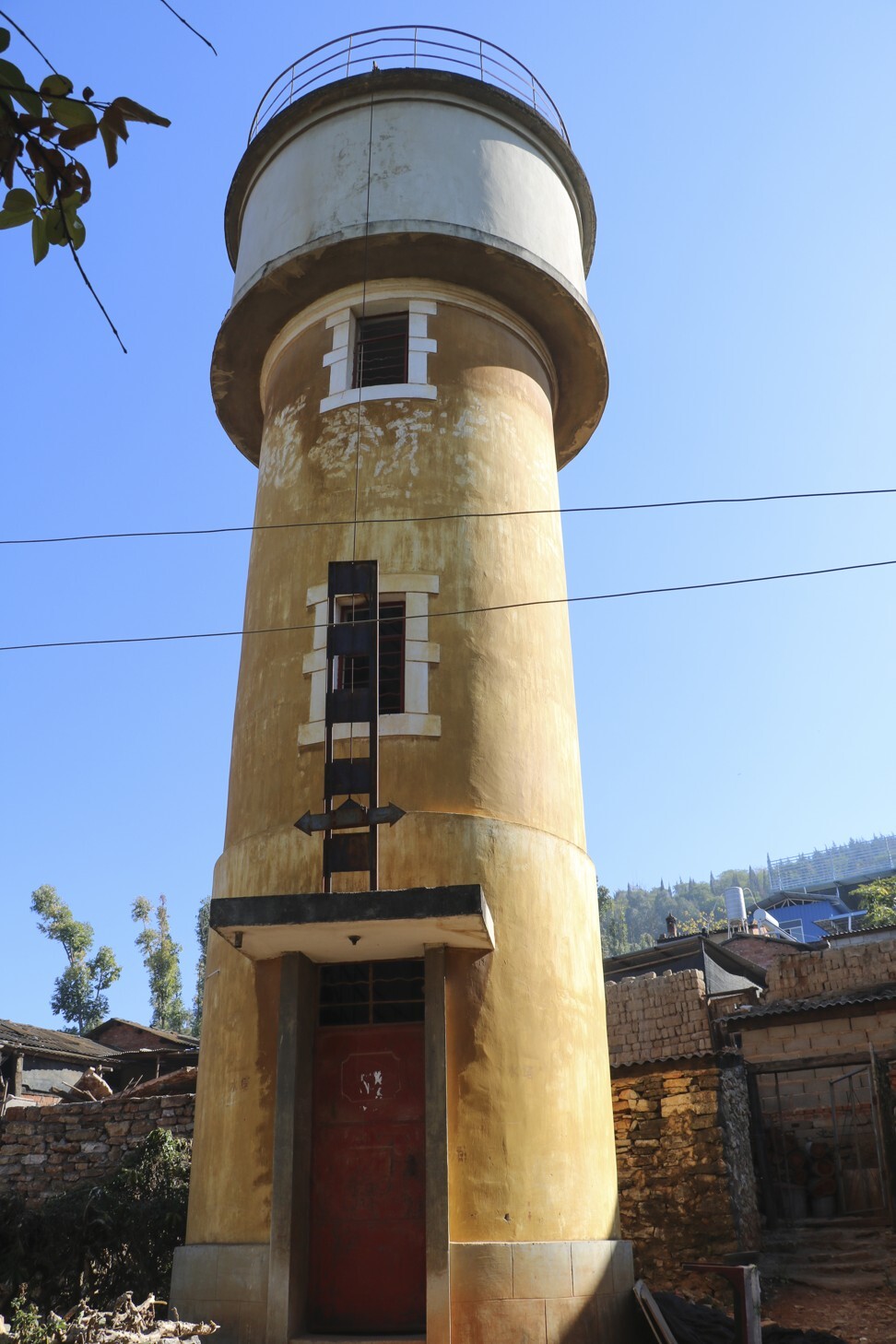
Mengzi’s railway station is as dilapidated and ignored as those in Gejiu and Jijie, but a short bus ride away, Bise village station has been given the tourism treatment. Standing on the original Kunming-Haiphong line and (according to trackside French coordinates) bisected by the Tropic of Cancer, the station has cosplay costumes for hire, snacks vended from railway carriages and French buildings repainted so thoroughly there’s an Epcot vibe to the place. Yet this is no Disneyland.
Bise had been home to only a dozen people until 1910, when it became “an extremely busy transit station and trade fair”. Telecommunications and a post office were established, as were several foreign firms, particularly after 1936, when the Gebishi line became fully operational.
During World War II, some of Beijing’s top universities merged and fled south, first to Hunan province and then to Yunnan, where they forged the National Southwestern Associated University, with faculties installed in a lakeside French customs house in Mengzi. Many professors and students came by train, alighting at Bise.
By good fortune, Cui and Old Fu are taking some photography enthusiasts on a tour nearby and we’re able to rendezvous in Mengzi. We head into the surrounding hills to explore the trackside market town of Zhicun and a primitive but intensely colourful Miao minority world seemingly cut off from the rest of China by the cloud line. Over a brunch of rice noodles we agree that distant Renzi Bridge should be next on the itinerary.
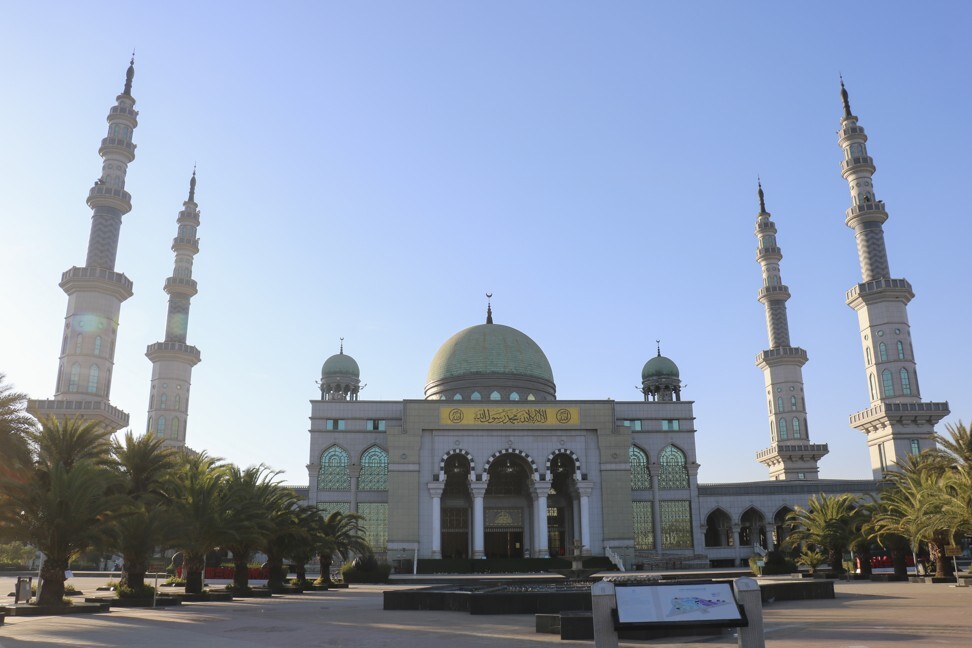
Cui drives me into Pingbian county, the mountains growing taller as the road becomes narrower. After several hours we descend into the arcadian Nanxi valley, flanked on all sides by high forested slopes and gravity-defying Miao houses. The main crops here are mango, papaya and pineapple, suggesting we have entered the tropics.
“Look down there, you can see the railway,” says Cui, standing by a cliff edge. The track can just about be distinguished, wreathing the mountainside. The perspective makes clear the task the French set themselves; the project was so ambitious that, on its completion in 1910, The Times newspaper reportedly dubbed it one of the “three engineering marvels of the world”, along with the Suez and Panama canals.
We park in a settlement of just a few households deep in the valley. Once known as Wujiazhai, or Five Families Village, it was renamed Renzi Village after the 112-year-old celebrity viaduct just ahead.
We reach this masterwork of the industrial age by hiking beside the river’s crystalline waters then up into the hills, through a tunnel and onto the bridge itself. There’s a guardhouse but no guard. A stone plaque commemorates the bridge’s completion, in December 1908, when, after two trusses were riveted together and a straight beam installed, a train finally crossed.
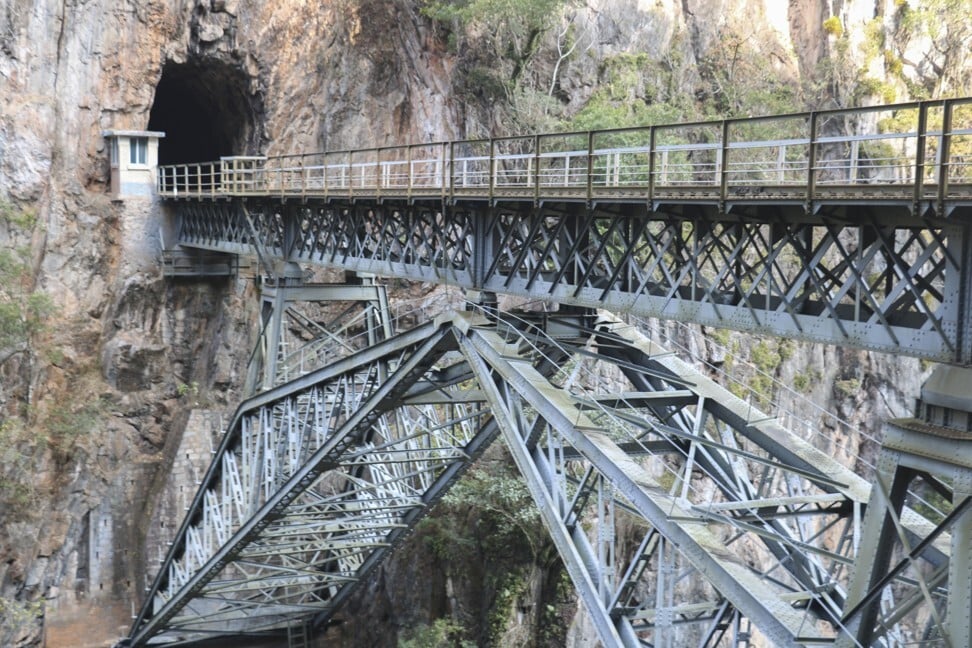
One of the farmhouses in Renzi Village doubles as a guest house. Given the remoteness of the location, we book in for the night. At dusk, Old Fu asks what I think of the bridge. “It’s incredible,” I reply, “but I would loved to have seen it in its heyday, with a train crossing it.”
Old Fu checks his watch. “There should be one tonight, around 10pm.” It turns out the line is disused “only for passengers, not freight”.
Groggy from rice and beer, we return to the valley by torchlight, setting up base on river boulders beneath the bridge. We’re not alone; some have brought cameras, others are content just to witness the spectacle. Night-blind, all senses are enhanced. The river sounds like a torrent, the chirping insects a nocturnal choir, my rock as cold and moist as the back of a buffalo.
“Hear that?” asks Old Fu, eventually.
The sound of a train expands to fill the darkness. It whistles through the tunnel, then crosses the bridge, its headlights briefly illuminating the valley. Then, just as suddenly, it is gone. Northbound.